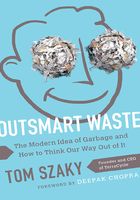
The Birth of Widespread Chronic Consumerism
To further compound the problem of useless outputs, today we live in a world of chronic consumerism—a world where we buy much more than we need. This unique behavioral trend began just after the Second World War. In the late 1940s, our forebears had not only lived through the Great Depression but also just emerged from the biggest war the world had ever seen. Humanity needed to rebuild. Some countries started by putting returning veterans to work converting wartime factories into firms that served civilian consumption, later expanding to meet growing demand.
Due to the development and the commercial viability of plastics and other man-made materials, we were perfectly suited for the arrival of cheap, disposable products. The production of such products made it easier for common people to acquire luxuries that were once expensive or even unattainable—not to mention to buy their way out of doing dishes by hand and keep food from spoiling longer than before. Just think of the joy brought to homemakers when in 1947 Earl Silas Tupper patented Tupperware or when the scientists at DuPont invented nylon.
And it worked. In the years following WWII, the economy rebounded better than anyone could have expected, and we have maintained a growing consumer appetite ever since. In parallel, and in no small part due to postwar global prosperity, the human population grew sevenfold during the same time period; a population that was just over 1 billion people at the beginning of the twentieth century is today well over 7 billion.
As you might expect from a system based largely on the production and the consumption of synthetic materials, the resulting garbage problem followed our economic growth. In 1905 product-related waste was well under 100 pounds per person per year in the United States. Additionally, it was primarily made from useful outputs like wood, cotton, and other materials that nature can use as a positive input. Since then product waste has grown by 1,400 percent. What’s more, 75 percent of that waste is now made of useless outputs like plastics and other complex, man-made materials that nature cannot repurpose. It is even worse when you consider how much our population has grown and that the problem grows proportionally with it.
What’s more, 75 percent of that waste is now made of useless outputs like plastics and other complex, man-made materials that nature cannot repurpose. It is even worse when you consider how much our population has grown and that the problem grows proportionally with it.
But why should we change? The production and the consumption of cheap goods was the silver bullet that brought us out of national depression and global war and into the greatest period of economic prosperity in human history. Perhaps we should go on celebrating this achievement with more marketing and more consumption.
And it looks like we have. Many people define their lives based on their accumulated stuff. Just look at the admiration our society has for people who drive a fancy car, live in a big house, or are profiled on TV shows like MTV Cribs and Lifestyles of the Rich and Famous. Our accumulated things define our rank in society and are points in the system whereby we are “scored.” I personally fall into the same quagmire: I drive a fancy sports car, recently bought a larger house, and care about how much my business grows year over year. While I’m trying very hard to change, I can tell you that it is an uphill battle.
All economic and employment growth, by definition, was and still is predicated on people’s buying stuff. To the detriment of our ecosystem, there is no public policy or popular culture to curb consumerism or slow population growth. Both are direct drivers of our current definition of prosperity—a definition grounded in economic growth and measured by looking at gross domestic and national product. In fact, we seem to focus entirely on driving consumption instead of curbing it.
Recently, I was having a conversation with the chief executive officer of a major North American waste management company, who told me that the size of his business is directly related to the size of the economy (typically with a lag of about a year, as it does take time for the objects we buy to become waste). With the modern market economy, we value companies not only on their objective size but also on their growth and potential for more growth. Growth is our economy’s insatiable goal, and the larger our economy, the larger the waste problem.